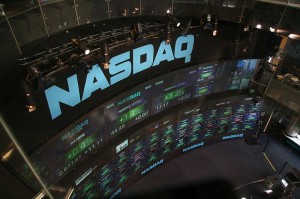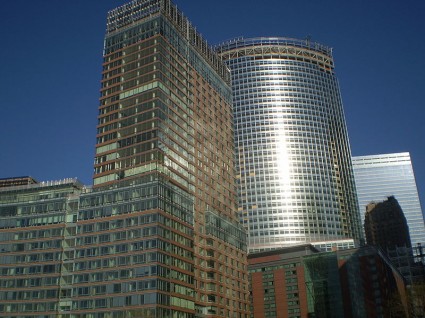 As stocks have risen in recent years, the big hedge funds and the “too big to fail” banks have used borrowed money to make absolutely enormous profits. But when you use debt to potentially multiply your profits, you also create the possibility that your losses will be multiplied if the markets turn against you. When the next stock market crash happens, and the gigantic pyramid of risk, debt and leverage on Wall Street comes tumbling down, will highly leveraged banks such as Goldman Sachs ask the federal government to bail them out? The use of leverage is one of the greatest threats to our financial system, and yet most Americans do not even really understand what it is. The following is a basic definition of leverage from Investopedia: “The use of various financial instruments or borrowed capital, such as margin, to increase the potential return of an investment.” Leverage allows firms to make much larger bets in the financial markets than they otherwise would be able to, and at this point Goldman Sachs and the big hedge funds are pushing leverage to ridiculous extremes. When the financial markets go up and they win on those bets, they can win very big. For example, revenues at Goldman Sachs increased by about 30 percent in 2012 and Goldman stock has soared by more than 40 percent over the past 12 months. Those are eye-popping numbers. But leverage is a double-edged sword. When the markets turn, Goldman Sachs and many of these large hedge funds could be facing astronomical losses.
As stocks have risen in recent years, the big hedge funds and the “too big to fail” banks have used borrowed money to make absolutely enormous profits. But when you use debt to potentially multiply your profits, you also create the possibility that your losses will be multiplied if the markets turn against you. When the next stock market crash happens, and the gigantic pyramid of risk, debt and leverage on Wall Street comes tumbling down, will highly leveraged banks such as Goldman Sachs ask the federal government to bail them out? The use of leverage is one of the greatest threats to our financial system, and yet most Americans do not even really understand what it is. The following is a basic definition of leverage from Investopedia: “The use of various financial instruments or borrowed capital, such as margin, to increase the potential return of an investment.” Leverage allows firms to make much larger bets in the financial markets than they otherwise would be able to, and at this point Goldman Sachs and the big hedge funds are pushing leverage to ridiculous extremes. When the financial markets go up and they win on those bets, they can win very big. For example, revenues at Goldman Sachs increased by about 30 percent in 2012 and Goldman stock has soared by more than 40 percent over the past 12 months. Those are eye-popping numbers. But leverage is a double-edged sword. When the markets turn, Goldman Sachs and many of these large hedge funds could be facing astronomical losses.
Sadly, it appears that Wall Street did not learn any lessons from the financial crisis of 2008. Hedge funds have ramped up leverage to levels not seen since before the last stock market crash. The following comes from a recent Bloomberg article entitled “Hedge-Fund Leverage Rises to Most Since 2004 in New Year“…
Hedge funds are borrowing more to buy equities just as loans by New York Stock Exchange brokers reach the highest in four years, signs of increasing confidence after professional investors trailed the market since 2008.
Leverage among managers who speculate on rising and falling shares climbed to the highest level to start any year since at least 2004, according to data compiled by Morgan Stanley. Margin debt at NYSE firms rose in November to the most since February 2008, data from NYSE Euronext show.
So why is this so important?
Well, as a recent Zero Hedge article explained, even a relatively small drop in stock prices could potentially absolutely devastate many hedge funds…
What near record leverage means is that hedge funds have absolutely zero tolerance for even the smallest drop in prices, which are priced to absolute and endless central bank-intervention perfection – sorry, fundamentals in a time when global GDP growth is declining, when Europe and Japan are in a double dip recession, when the US is expected to report its first sub 1% GDP quarter in years, when corporate revenues and EPS are declining just don’t lead to soaring stock prices.
It also means that with virtually all hedge funds in such hedge fund hotel names as AAPL (the stock held by more hedge funds – over 230 – than any other), any major drop in the price would likely lead to a wipe out of the equity tranche at the bulk of AAPL “investors”, sending them scrambling to beg for either more LP generosity, or to have their prime broker repo desk offer them even more debt. And while the former is a non-starter, the latter has so far worked, which means that most hedge funds have been masking losses with more debt, which then suffers even more losses, and so on.
By the way, Apple (AAPL) just fell to an 11-month low. Apple stock has now declined by 26 percent since it hit a record high back in September. That is a very bad sign for hedge funds.
But hedge funds are not the only ones flirting with disaster. In a previous article about the derivatives bubble, I pointed out the ridiculous amount of derivatives exposure that some of these “too big to fail” banks have relative to their total assets…
According to the Comptroller of the Currency, four of the largest U.S. banks are walking a tightrope of risk, leverage and debt when it comes to derivatives. Just check out how exposed they are…
JPMorgan Chase
Total Assets: $1,812,837,000,000 (just over 1.8 trillion dollars)
Total Exposure To Derivatives: $69,238,349,000,000 (more than 69 trillion dollars)
Citibank
Total Assets: $1,347,841,000,000 (a bit more than 1.3 trillion dollars)
Total Exposure To Derivatives: $52,150,970,000,000 (more than 52 trillion dollars)
Bank Of America
Total Assets: $1,445,093,000,000 (a bit more than 1.4 trillion dollars)
Total Exposure To Derivatives: $44,405,372,000,000 (more than 44 trillion dollars)
Goldman Sachs
Total Assets: $114,693,000,000 (a bit more than 114 billion dollars – yes, you read that correctly)
Total Exposure To Derivatives: $41,580,395,000,000 (more than 41 trillion dollars)
Take another look at those figures for Goldman Sachs. If you do the math, Goldman Sachs has total exposure to derivatives contracts that is more than 362 times greater than their total assets.
That is utter insanity, but we haven’t had a derivatives crash yet so everyone just keeps pretending that the emperor actually has clothes on.
When the derivatives crisis happens, things in the financial markets are going to fall apart at lightning speed. A recent article posted on goldsilverworlds.com explained what a derivatives crash may look like…
When one big bank faces some kind of trouble and fails, the banks with the largest exposure to derivates (think JP Morgan, Citygroup, Goldman Sachs) will realize that the bank on the other side of the derivatives trade (the counterparty) is no longer good for their obligation. All of a sudden the hedged position becomes a naked position. The net position becomes a gross position. The risk explodes instantaneously. Markets realize that their hedged positions are in reality not hedged anymore, and all market participants start bailing almost simultaneously. The whole banking and financial system freezes up. It might start in Asia or Europe, in which case Americans will wake up in the morning to find out that their markets are not functioning anymore; stock markets remain closed, money at the banks become inaccessible, etc.
But for now, the party continues. Goldman Sachs and many of the big hedge funds are making enormous piles of money.
In fact, according to the Wall Street Journal, Goldman Sachs recently gave some of their top executives 65 million dollars worth of restricted stock…
Goldman Sachs Group Inc. GS -0.76% handed insiders including Chief Executive Lloyd Blankfein and his top lieutenants a total of $65 million in restricted stock just hours before this year’s higher tax rates took effect.
The New York securities firm gave 10 of its directors and executives early vesting on 508,104 shares previously awarded as part of prior years’ compensation, according to a series of filings with the Securities and Exchange Commission late Monday.
And the bonuses that employees at Goldman receive are absolutely obscene. A recent Daily Mail article explained that Goldman employees in the UK are expected to receive record-setting bonuses this year…
Britain’s army of bankers will re-ignite public fury over lavish pay rewards as staff at Goldman Sachs are expected to reward themselves £8.3 billion in bonuses on Wednesday.
The American investment bank, which employs 5,500 staff in the UK, will be the first to unveil its telephone number-sized rewards – an average of £250,000 a person – as part of the latest round of bonus updates.
The increase, up from £230,000 last year, comes as British families are still struggling to make ends meet five years after banks brought the economy to the brink of meltdown.
Wouldn’t you like to get a “bonus” like that?
Life is good at these firms while the markets are going up.
But what happens when the party ends?
What happens if the markets crash in 2013?
When you bet big, you either win big or you lose big.
For now, the gigantic bets that Wall Street firms are making with borrowed money are paying off very nicely.
But a day of reckoning is coming. The next stock market crash is going to rip through Wall Street like a chainsaw and the carnage is going to be unprecedented.
Are you sure that the people holding your money will be able to make it through what is ahead? You might want to look into it while you still can.


